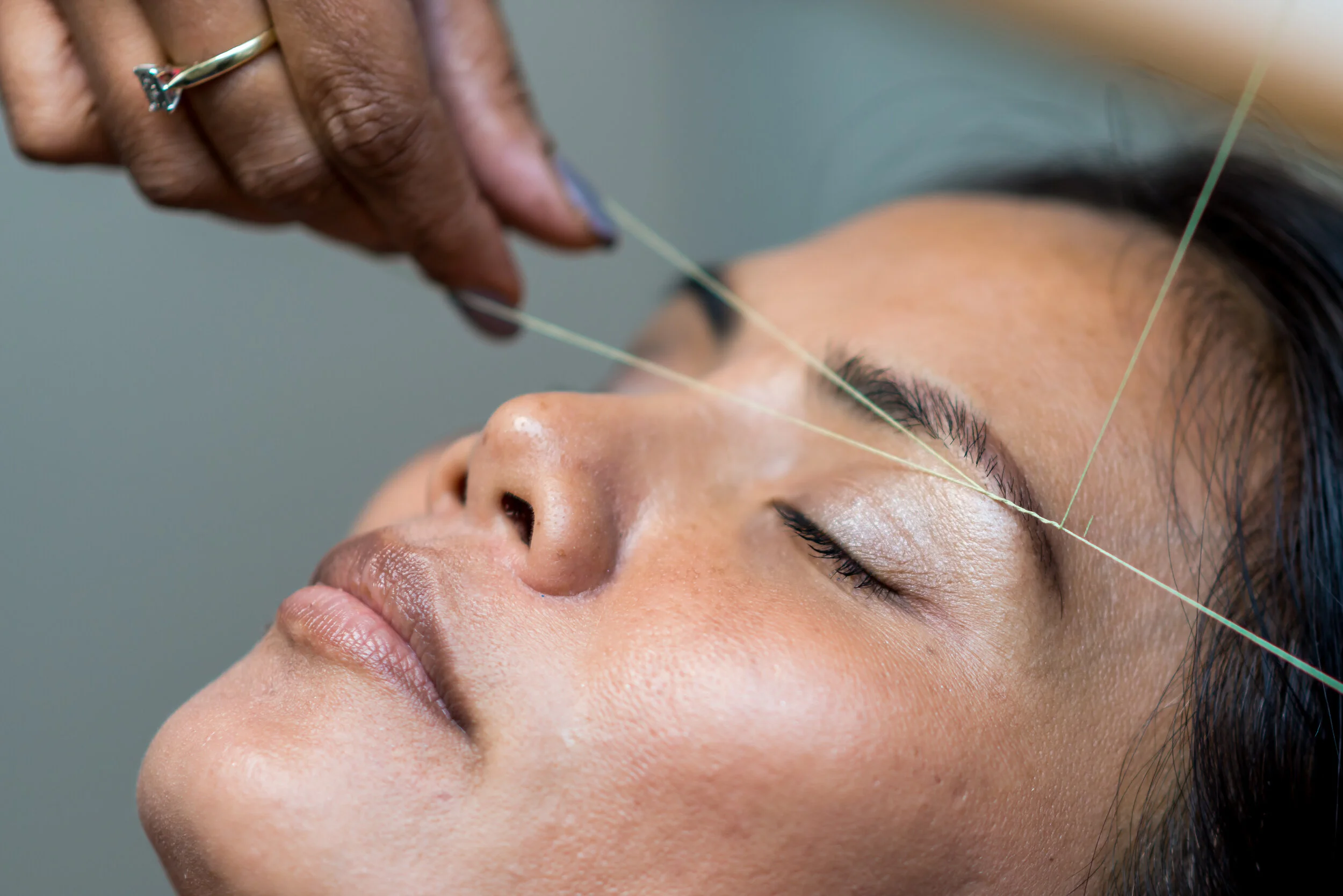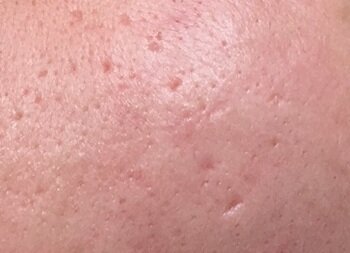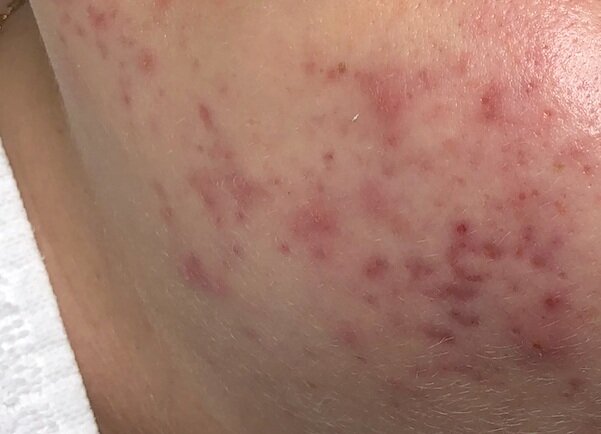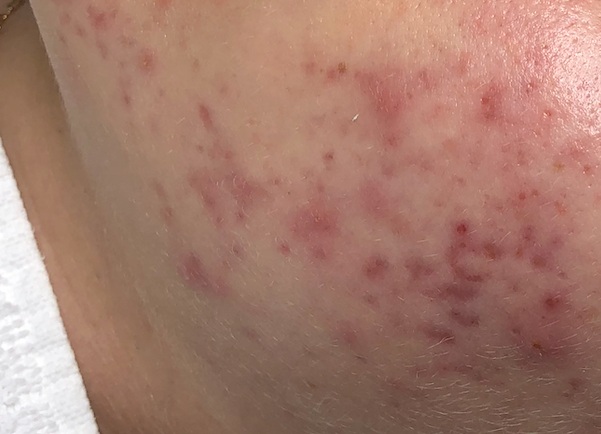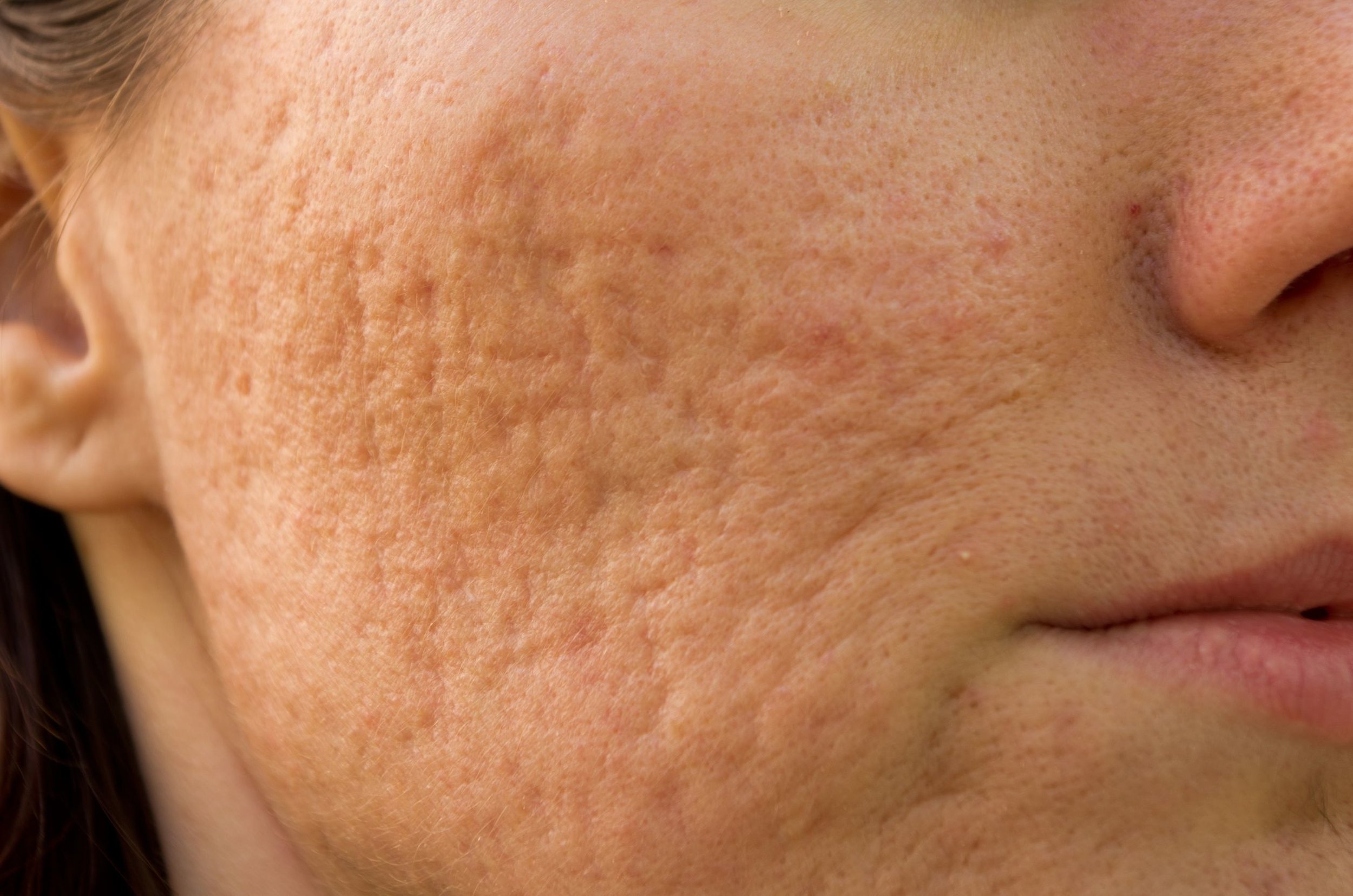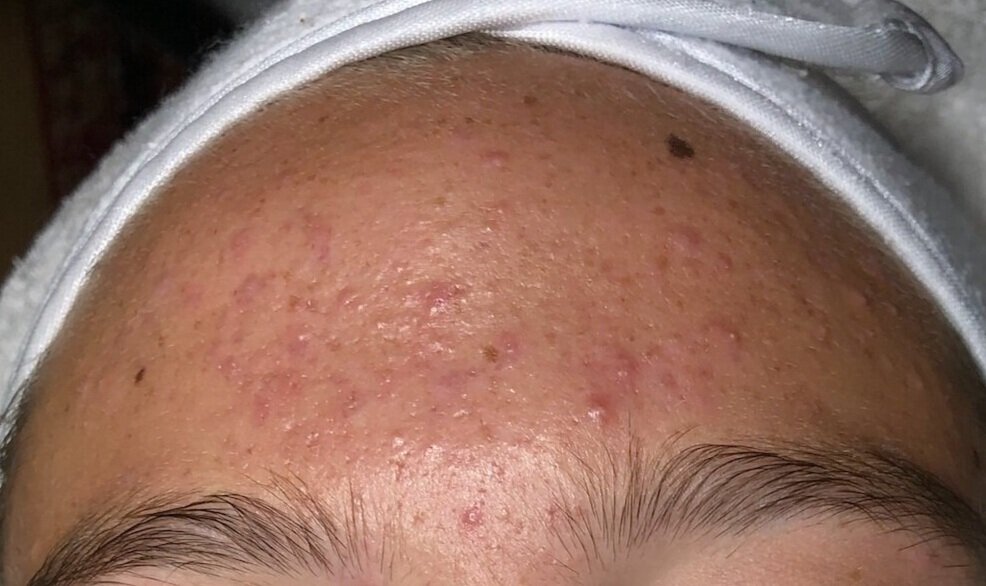Out of all of the bullsh*t information floating around about acne, “hormonal acne” drives me the most crazy. If hormones were the cause of acne then every human on earth would have acne because, guess what? Every human on earth has hormones. Lots of them! And those hormones are fluctuating, like, all the time. Just think about it-if hormones were the cause of acne then every human who is pregnant, stressed out, not getting enough sleep, or on their period would be breaking out but that is not the case. I think there are two reasons why “hormonal acne” has become such a prevalent term in the acne world. The first is those stupid face map illustrations that are floating around all over the internet. And the second is ignorant professionals who blame acne on hormones because, although they mean well, they really don’t know squat about acne.
Chin and jawline breakouts are not caused by hormones
Those face map illustrations that have become popular all over Pinterest and social media supposedly map the connections between where your acne is located on your face and which internal system is causing your acne. According to those illustrations, acne on the cheeks is supposedly caused by dairy, breakouts on the nose are caused by indigestion, and, yup, breakouts on the chin and jawline are caused by hormonal imbalances. All of this is bulllllllsh*t. I’ve had lots of clients who have RH but they never get triggered on their nose when they have indigestion and I have had lots of clients who never have cheek breakouts even though they consume a ton of dairy. That is because where we break out is not a reflection of some internal system gone awry. The location of our breakouts is determined by two things: our genes and product usage.
The location of our breakouts is determined by these factors
Acne tends to flare up in areas where our oil glands are most active. Genes determine where and when our oil glands get activated and they tend to get activated on different areas of our face at different points in our lives which is why acne tends to move in a wave around our face as we get older. The “acne wave” usually starts around our t-zone around puberty and migrates to the lower half of our face in our 20s and 30s. Comedogenic products also affect where we break out so if you are using a pore-clogging shampoo, you might break out along your hairline and if you are using a lip balm that contains coconut oil, you will likely break out around your mouth and chin. There are dozens of skincare, personal care, and household products that can cause us to break out in various locations not just on your face but our bodies. We go over each product in our e-course The 8 Steps To Clear Skin.
Dermatologists and skin care professionals use “hormonal acne” as a cop out
So many professionals including Dermatologists, estheticians, coaches, and acupuncturists fail to successfully treat acne so they use hormones as a reason to excuse themselves for failing. After all, if it’s hormones then there is nothing anyone can do so it’s not their fault, right? Wrong. We actually don’t have to control 100% of the acne puzzle to get clear and the AES method is all about teaching you how to manage the factors that are within your control. If you live in the San Francisco Bay Area, you can make an appointment at our clinic or check out our e-course if you are not local to learn more about our method.
Hormones can trigger or exacerbate acne but they do not cause it
Like I said, if hormones caused acne then everyone going through puberty and their menstrual cycle would be breaking out. But if your acne journey started anything like mine then you remember dealing with middle school breakouts while everyone else seemed to maintain perfectly clear skin. The reason why some teenagers break out while others don’t isn’t because the teenagers who experience breakouts are the only ones going through puberty. Every teenager goes through puberty but only some develop acne because hormones are a potential trigger but the root cause of acne is a genetic condition called Retention Hyperkeratosis (RH). RH is the condition underlying acne regardless of what combination of hormones, diet, products, lifestyle, and other factors you are triggered by.
What is the connection between Retention Hyperkeratosis and hormones?
Those of us that are born with RH have a genetic dysfunction that causes little acne seeds to be planted in our skin. These seeds then grow due to a combination of natural, dietary, product, and lifestyle triggers. One of those natural triggers is hormones. Without the underlying condition though, there is nothing for a trigger to set off. In this sense, acne is similar to diabetes. Someone who is born with Type I diabetes wouldn’t blame their condition on donuts would they? Of course not! They know that donuts in and of themselves don’t cause diabetes because there are plenty of people who can eat dozens of donuts without problems. Donuts are a potential trigger but the root cause of their condition is a biological dysfunction that affects insulin. If they didn’t have a problem with insulin then donuts wouldn’t be an issue because there would be no underlying condition to trigger. Well, think of the relationship between acne and hormones like the diabetic and the donut. Without RH, there would be no underlying condition for hormones to trigger and this is evidenced by the fact that there are plenty of people who experience hormone fluctuations without ever getting a pimple.
Acne is a multifactorial disease so there is never one factor causing it
Even if hormones were the cause of acne, they still wouldn’t be enough to cause a breakout because acne is a multifactorial disease which means that it is always caused by a unique combination of multiple factors. I think of acne like a puzzle-there are lots of different pieces that make up the big picture and hormones are just one piece of the puzzle. There are dozens, even hundreds of other potential triggers including diet, medication, stress, laundry detergent, and hand soap.
Calling acne “hormonal” is vague, ambiguous, and completely unclear
Finally, the last reason I hate the term hormonal acne is because it doesn’t really mean anything. There are over 50 hormones and they are chemical messengers that are responsible for signaling pretty much every function in our bodies. So of course hormones are connected to acne-they are connected to everything! But which of the 50 hormones is it? And which function is it signaling? If you sign up for our e-course, we will be going over all of the potential acne triggers and the connection between acne and hormones in detail.
















